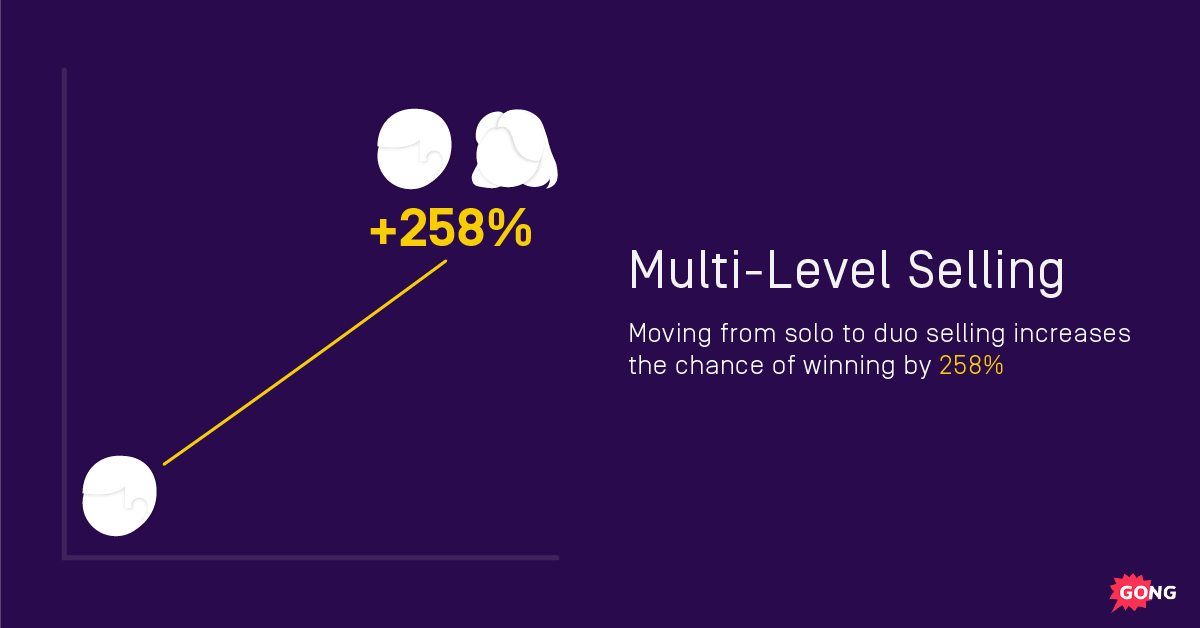Matt Rosenberg: Why Multi-Level Selling is Critical for Today’s Landscape
How can you optimize team selling, even while working from home?
What steps can you take to help define your ideal customer set?
How do you build resilience to handle challenging business cycles?
On a recent episode of the Reveal podcast, we connected with Matt Rosenberg, CRO of Compass, for answers to these and other questions that are top of mind for revenue leaders.
Key Points to Remember
- Virtual meetings are a great opportunity to involve senior leadership in your team selling approach.
- Your sales methodology needs to map to your customer segments, and should also be mirrored in your tech stack.
- Installing an existing playbook into a new environment doesn’t make sense. Focus instead on building a framework and modifying it for that particular business.
- Recruiter calls to your top sales reps is a signal that you’ve done your job well.
- What you do in times of strength prepares you for inevitable downturns.
Unconventional Sales Training
I’m so incredibly grateful I went to law school, and I think there’s so much that I carry with me to this day that I apply daily from being a lawyer. You really learn about the value of quality work product. And that’s the same when you’re dealing with clients. You’re representing yourself and your company. You need to be precise with your word choice.
And law in a lot of respects is about influencing, negotiating, and discussing hard topics. And not being afraid to challenge. Those are all things that I think expert salespeople need to be doing.
Most people don’t think about law school as a great breeding ground for wonderful sellers. But you have to be incredibly analytical in enterprise sales. You have to be an amazing listener, and lawyers are that. And you have to be deeply probing. And then you have to be able to clearly and concisely communicate issues and concepts, and translate ideas into action. That is what salespeople do.
The more scared you are taking the opportunity, the more the opportunity’s probably right for you.
Team Selling
It’s been really interesting, the concept of multi-level selling in a virtual environment. Our biggest challenge is having offices all over the country, and we have a leadership team that’s very busy. But now, because we’re working off of video calls, we’re able to have leadership pop into more calls that they’ve ever been able to pop into before.
So we can leverage our CEO, myself, and our head of Marketing differently. And really do a lot more multi-level C-suite selling in a way that we’ve never done before. And that matters. That’s impactful. We’re able to demo our platform in a different way, and I think a more effective way, in a remote environment through screen shares, where our prospects are engaging more with the technology than sitting in a conference room. So I think there’s been a lot of really good learning.
The cadence of outreach for us has shifted. When you’re in a crisis mode, you have to be careful with your messaging. You have to be sensitive with tone. So we spend a lot of time just meeting our prospects where they are, and ensuring that they’re safe and that they’re happy. And not pushing, but really adding value and dropping insights, knowledge, and perspectives to help them—whether they’re at Compass or not.
Data Breakout—Multi-Level Selling
Matt’s team has relied heavily on multi-level selling—or team selling—in response to the shift in the economy and selling landscape.
For long time listeners, you might remember this stat: The Gong Labs team analyzed more than 53,000 sales calls and found that team selling—defined as bringing just one other person from your team onto a sales call—correlates to a 258% increased chance of winning a deal compared to flying solo.
That’s a huge leap. Clearly Matt knows this, and has implemented it for his sales process.
Specifically, Matt said he’s looping in his internal executives, like his CEO and head of Marketing, to demo his platform more effectively. This works because not only is he aligning experts with his buyer’s journey, but he’s also tapping into the authority of the C-suite. This naturally raises the conversation to a strategic level, something that might work for your sales process as well.

Defining Your Customer Set
One of the biggest challenges for any high-growth, scaling company is just definition of customer set. One of the first things that Eventbrite had to do was define who its target customer was. And so in the universe of people that can use Eventbrite, it could be anything from a very large music festival, to a small music venue, to a fundraiser for a school. So that means there’s a huge prospective TAM. But as I think we’ve all come to learn and appreciate, focus delivers results.
And so one of the big challenges with Eventbrite was just defining the customer segments that we wanted to address with the sales channel. So we ended up breaking down the total TAM into four different segments, and then within those segments, sub-segments.
The first thing we needed to do was a customer definition issue, which I think every sales leader wrestles with. Which is, “Who is my customer? How do I focus the resources I have to drive the most return for the least cost?”
And then the next question was, “How do you speak to them?” Because each of the segments wants to be spoken to a little bit differently. The buyer personas are different. So there’s a lot of persona definitional work that I think has to happen.
Underneath all of that was building out a sales methodology and process that map to the segments you are going after. And that had to be not only in building out the actual methodology and process, but mirroring that in Salesforce. Building out the tech stack in a way that you could see the data.
And not only scaling the sellers, but building a sales operations team that could interpret the data. Because you’re constantly iterating right? You’re trying to figure out what’s working, what’s not. You’re looking at the data and trying to understand where there are signals and where there are not. And then expand slightly from that and continue to gain market share.
Framework vs Playbook
There are plenty of people that come in with a playbook. The one thing I’m always struck by is how many sales leaders say, “So I have a playbook. I’m gonna install my playbook here.”
How do you install a playbook into a new environment, a new company? We don’t actually know what the customers say, how they think, how they act, who the team is you’re going to be hiring. It just doesn’t seem to make sense.
I very much believe in having a framework and modifying it for the business. And I don’t think that comes from anything other than having a very innate, natural curiosity. And being very humble. Acknowledging when you make mistakes, and be willing to step in front of your team, in front of your CEO, and be like, “Yeah, we messed up.”
It’s on me, not my team. On me. And then you get great work out of people. And if you’re hiring the right people and they feel safe to do the great work, they’re going to figure it out.
Empower the people you hire. Give them the safety and comfort to do great work. And then great results will happen.
A Sign of Good Leadership
I always say to my sales team, “Look, I know I’ve made it as your leader when all the recruiters start calling you. When they start calling you, that’s the mark that I’ve done my job. Because now we as a team are known as the best sellers in the industry.”
I don’t want them to take the job, but I want them to take the call. I’ll always say, “Take the call from the recruiter. Absolutely talk to them. Hear what they have to say.”
And if they have a better opportunity than the opportunity I can give them, I tell my team, “Come talk to me. And if it’s better, I’ll tell you. I’ll say ‘Take that opportunity.’”
If it’s not, I’ll tell them why I think it’s not. But I really do love that part of my job.
Managing the Ups and Downs
There’s moments in a business where you’re just crushing it, you’re feeling on top of the world. And I always try to remind myself that the bottom is coming. It’s gonna fall out, and you need to be prepared for the downward ride. What you’re doing in times of strength is preparing for that moment of weakness in a business.
And so it helps level set you, and you never get too comfortable with success. If you have that mindset, when you go down into the trough, you’ve built the infrastructure to get out of it.
Particularly in today’s business cycle, things go from good to bad, from bad to good faster than we’ve ever seen before. That creates a lot of stress. So I try to center myself by never being too high, never being too low. Because realizing it’s an inevitable truth that in business, there will be ups and downs. And you need to prepare for the down when you’re up, and realize when you’re down that you’ll get back up because the work you did when you were up.
I think helping a customer solve a hard problem is truly invigorating. That feeling you get when you know in your heart of hearts that you’ve just given somebody a solution. I think that’s just such a wonderful feeling.
Subscribe to Reveal: The Revenue Intelligence Podcast
Every week, we interview senior revenue professionals who share their insights on how they leverage revenue intelligence to drive success and win their market.
You’ll hear how modern go-to-market teams win, close revenue with critical deal insight, and execute their strategic initiatives—plus all the challenges that come along with it.
Listen now at gong.io/podcasts.
